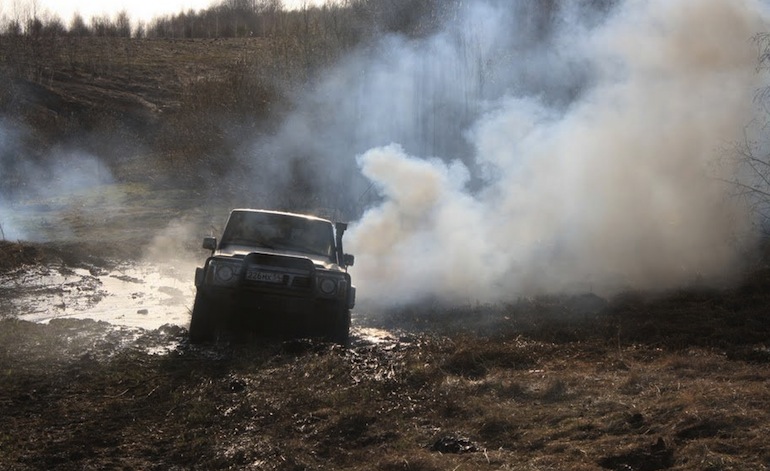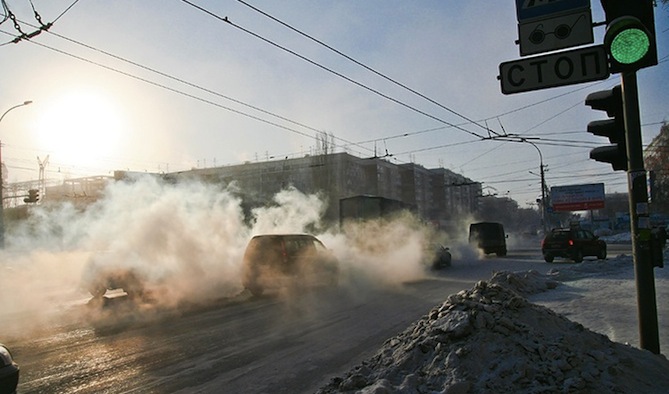
Smokes diesel engine - black, white and gray smoke
The internal combustion engine is so named because the fuel-air mixture burns in it, and, as you know, smoke and ash are a by-product of combustion. If a diesel or gasoline engine is running normally, then not a lot of combustion products are formed, ideally clear smoke without any shades comes out of the exhaust pipe.
If we see white-gray or black smoke, then this is already evidence of engine malfunctions.
You can often read in various articles on automotive topics that experienced mechanics can already determine the cause of the breakdown by the color of the exhaust. Unfortunately, this is not true, the color of the smoke will only tell the general direction of the search, and only a complete diagnosis will help to find the real cause of the increased smoke in a diesel engine.

It must be said that in no case should it be delayed with diagnostics, since a change in the color of the exhaust indicates problems in the operation of the engine, fuel system, turbine, fuel pump or other systems.
Further tightening will result in high unexpected repair costs.
Ideal conditions for the combustion of the fuel-air mixture
In order to produce as little combustion products as possible, the following conditions must be realized in the cylinder block of a diesel engine:
- the quality of atomization of diesel fuel injected into the combustion chamber through the injector nozzles;
- supply of the required amount of air;
- the temperature was maintained at the desired level;
- the pistons created the required pressure for heating the oxygen - the compression ratio;
- conditions for complete mixing of fuel with air.
If any of these conditions is not met, then the mixture will not burn completely, respectively, there will be a higher content of ash and hydrocarbons in the exhaust.
The main causes of increased smoke in a diesel engine are:
- low air supply;
- incorrect lead angle;
- fuel is not atomized properly;
- diesel fuel of low quality, with impurities and high sulfur content, low cetane number.
Troubleshooting
Often enough to solve the problem replace the air filter. A clogged air filter prevents air from entering the intake manifold to the full extent.
Black smoke from the exhaust pipe will indicate that it is time to change, or at least blow through, the air filter. At the same time, fuel consumption increases significantly, since a certain percentage of it does not completely burn out, but is released along with the exhaust gases. And if you have a turbine, then an untimely replacement of the air filter can lead to its failure, since all these incompletely burned particles will settle in the turbine in the form of soot.

Replacing the air filter in many cases is the only solution to the problem. After a while, the exhaust turns from black again to almost colorless. If this does not help, then you need to look deeper for the cause.
With a sharp gas supply, the color of the exhaust may change to black. Most likely this is evidence that the nozzles are clogged and the fuel mixture is not completely sprayed. It is also evidence of early injection timing. In the first case, it is necessary to clean the injector, in the second case, check whether the fuel sensors are working correctly. Due to such problems, the temperature level rises rapidly, which can lead to rapid burnout of pistons, bridges and prechambers.

Black smoke it may also indicate that oil from the turbocharger enters the cylinders. The malfunction may lie in the turbocharger itself, in the wear of the turbine shaft seals. Smoke with an admixture of oil can acquire a blue tint. Long driving on such an engine is fraught with big problems. You can determine the presence of oil in the exhaust in a simple way - look at the exhaust pipe, ideally it should be clean, a small amount of soot is allowed. If you see oily slurry, then oil is getting into the cylinders and action must be taken immediately.
If it comes down from the pipe gray smoke and there are dips in traction, then rather the problem is related to the booster pump, it is responsible for supplying fuel from the tank to the fuel system of the diesel unit. Blue smoke may also indicate that one of the cylinders is not working correctly, compression is reduced.
If it comes from the pipe White smoke, then most likely the reason is the ingress of coolant into the cylinders. Condensation can form on the muffler, and by its consistency and taste you can determine whether it is antifreeze or not. In any case, a full diagnosis will be a good solution.
Loading…